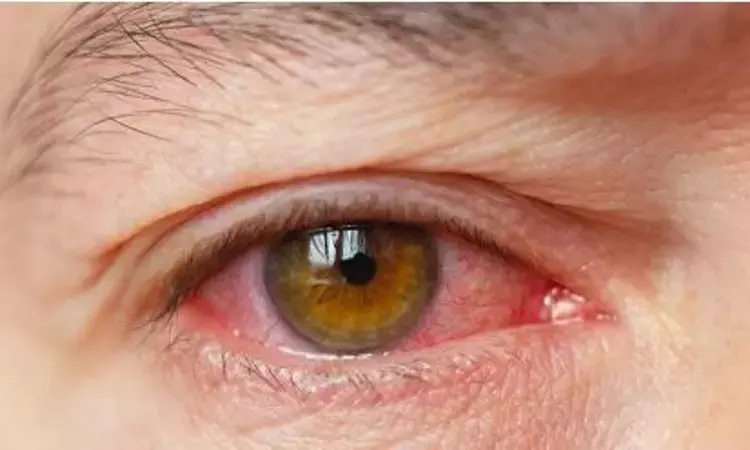- Home
- Medical news & Guidelines
- Anesthesiology
- Cardiology and CTVS
- Critical Care
- Dentistry
- Dermatology
- Diabetes and Endocrinology
- ENT
- Gastroenterology
- Medicine
- Nephrology
- Neurology
- Obstretics-Gynaecology
- Oncology
- Ophthalmology
- Orthopaedics
- Pediatrics-Neonatology
- Psychiatry
- Pulmonology
- Radiology
- Surgery
- Urology
- Laboratory Medicine
- Diet
- Nursing
- Paramedical
- Physiotherapy
- Health news
- Fact Check
- Bone Health Fact Check
- Brain Health Fact Check
- Cancer Related Fact Check
- Child Care Fact Check
- Dental and oral health fact check
- Diabetes and metabolic health fact check
- Diet and Nutrition Fact Check
- Eye and ENT Care Fact Check
- Fitness fact check
- Gut health fact check
- Heart health fact check
- Kidney health fact check
- Medical education fact check
- Men's health fact check
- Respiratory fact check
- Skin and hair care fact check
- Vaccine and Immunization fact check
- Women's health fact check
- AYUSH
- State News
- Andaman and Nicobar Islands
- Andhra Pradesh
- Arunachal Pradesh
- Assam
- Bihar
- Chandigarh
- Chattisgarh
- Dadra and Nagar Haveli
- Daman and Diu
- Delhi
- Goa
- Gujarat
- Haryana
- Himachal Pradesh
- Jammu & Kashmir
- Jharkhand
- Karnataka
- Kerala
- Ladakh
- Lakshadweep
- Madhya Pradesh
- Maharashtra
- Manipur
- Meghalaya
- Mizoram
- Nagaland
- Odisha
- Puducherry
- Punjab
- Rajasthan
- Sikkim
- Tamil Nadu
- Telangana
- Tripura
- Uttar Pradesh
- Uttrakhand
- West Bengal
- Medical Education
- Industry
Artificial tears can alter keratometry measurements in dry eyes patients

In a recent development, researchers have highlighted that Tear film - stabilizing eye drops prior to keratometry measurements influenced K-readings significantly, especially in dry eyes. The team further said that a time period of more than 5 minutes should be allowed to pass after instillation of eye drops. The higher the viscosity of the eye drops, the stronger the influence and the longer its persistence. The findings have been published in American Journal Of Ophthalmology.
The developments of advanced-technology intraocular lenses (IOLs) and new measuring devices have heightened expectations of visual outcome after cataract surgery. Dry-eye disease is multifactorial and causes an unstable tear film with an irregular surface. Symptoms include a burning sensation and blurred vision, and biomicroscopic signs like shortened tear breakup time, corneal and conjunctival fluorescein staining, and lid-parallel conjunctival folds. Artificial tears are often used to ameliorate the ocular surface for obtaining a precise measurement of the eye. However, there are anecdotal reports that usage of eye drops can alter the measurement.
With this in view, researchers undertook the study to assess the influence of artificial tears of different viscosity on K-readings prior to cataract surgery.
The study was designed as a Prospective randomized crossover, before-and-after clinical study.A total of 123 eyes of 80 patients prior to cataract surgery were assigned to 2 groups based on normal and dry eyes. Two native baseline keratometries were followed by instillation of either high- or low-viscosity eye drops. Keratometry was repeated 30 seconds, 2 minutes, and 5 minutes after instillation. Influence of eye drops of different viscosity in normal and dry eyes on short time K-readings.
Data analysis revealed the following facts.
· Repeatability between native baseline measurements was high (standard deviation = 0.02 mm in normal and in dry eyes).
· In normal and dry eyes, a statistically significant increase in measurement variability after instillation of both low-viscosity and high-viscosity eye drops was observed (P < .01).
· Measurement variability was most pronounced between baseline measurement and 30 seconds and diminished over time.
· Variability of K-readings appeared higher in dry eyes compared with normal eyes.
· Astigmatism changed more than 0.5 diopters in 13.2% of normal eyes and 34.4% in dry eyes using eye drops of high viscosity.
For the full article follow the link: https://doi.org/10.1016/j.ajo.2020.08.024
Dr Satabdi Saha (BDS, MDS) is a practicing pediatric dentist with a keen interest in new medical researches and updates. She has completed her BDS from North Bengal Dental College ,Darjeeling. Then she went on to secure an ALL INDIA NEET PG rank and completed her MDS from the first dental college in the country – Dr R. Ahmed Dental College and Hospital. She is currently attached to The Marwari Relief Society Hospital as a consultant along with private practice of 2 years. She has published scientific papers in national and international journals. Her strong passion of sharing knowledge with the medical fraternity has motivated her to be a part of Medical Dialogues.
Dr Kamal Kant Kohli-MBBS, DTCD- a chest specialist with more than 30 years of practice and a flair for writing clinical articles, Dr Kamal Kant Kohli joined Medical Dialogues as a Chief Editor of Medical News. Besides writing articles, as an editor, he proofreads and verifies all the medical content published on Medical Dialogues including those coming from journals, studies,medical conferences,guidelines etc. Email: drkohli@medicaldialogues.in. Contact no. 011-43720751


